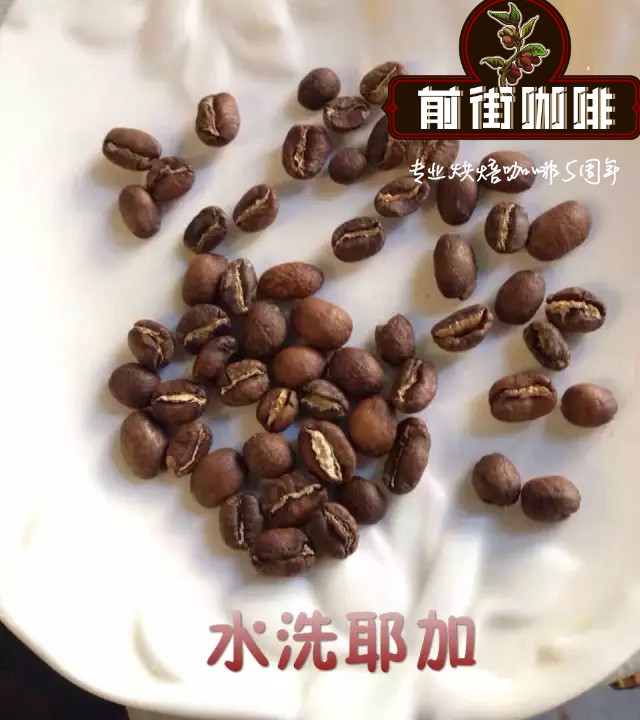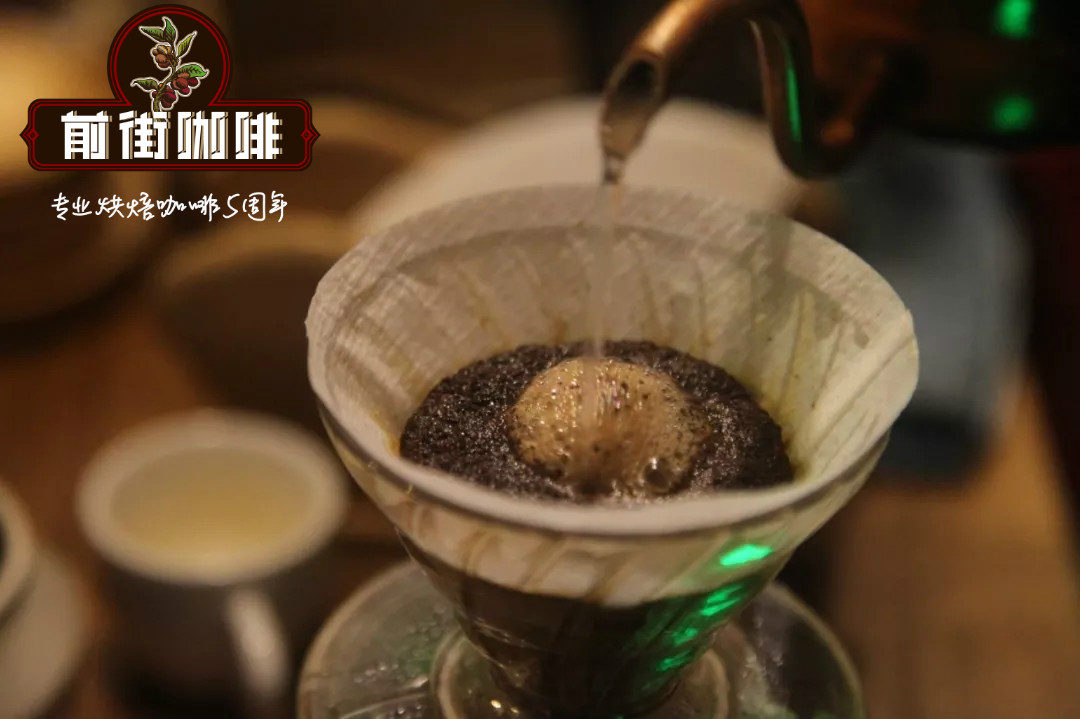Sidamo Shaquiso Coffee hand data how to drink Sidamo Shaquiso Coffee

Professional coffee knowledge exchange more coffee bean information please follow the coffee workshop (Wechat official account cafe_style)
[Sidamo sidamo]
The coffee flavor of Sidamo is very diverse, because of the different soil composition, regional microclimate and countless native coffee varieties, the coffee produced in each urban area has obvious differences and characteristics. The Sidamo producing area (Sidama) is located in southern Ethiopia. The industry here is dominated by agriculture, and the coffee-growing area is located around the East African Great Rift Valley (Great Rift Valley).
[introduction of producing areas]
Shakisso/Shakiso is located in the Guji producing area of Sidamo, in the south of Oromia, close to Sidama and Gedeo. There are many pits in this area, which were used to mine gold in the early days, so there are many potholes in this coffee growing area. This makes people dangerous when walking between coffee growing areas. Shakiso is a unique producing area of Guji / Cedamori, and even in Cedar Morri is a remote area far from most coffee producing areas, and another famous local product is gold ore. Miners, land, ethnicity and other factors also destabilized the region in 2006. As a result, the biggest problem facing the region now is that ─ needs manpower to maintain the growing area and harvest coffee.
Local small farmers began growing organic coffee in 2001 and work closely with medium-sized coffee producers because they are familiar with how to grow forest coffee in the highlands. It is one of the micro-producing areas with regional characteristics in the Sidamo producing area. The coffee in this region is quite unique, and the coffee produced has often attracted the attention of the market. The original meaning of Ninety Plus's legendary nekisse comes from Nectar from shakisso, and its producing area and name are all from Shaquiso Shakisso.
Flavor description: lemon and citrus, bright and crisp acidity, lemon, citrus, white grape juice, blackcurrant, Earl tea at the end
Coffee beans in Indonesia and Africa are classified according to the proportion of defective beans. Indonesian beans are mainly divided into six grades, namely G1--G6. The highest grades of washed beans are G1 and G2, and those of sun-dried beans are G1 and G3.
What does that mean? As follows:
Washing: Grade-1;Grade-2 (G1 > G2)
Sun: Grade-1 and Grade-3--Grade-5 (G1 > G3 > G4 > G5)
A few points to pay attention to:
A) Gr-1 is available both in washing and in the sun, provided that there is a "zero" defect and Premium Cup. Whether it's washing or tanning, Gr-1 rates the boutique of the boutique or Cup of Excellence coffee.
B) the lowest level of sun-tanned Shifei and Sidamo is Gr-4.
C) beans of the same level, such as Lim Gr-2, have both good and bad, depending on the sorting level and input of the exporter.
D) to meet the requirements of existing "zero" defects, Gr-1 beans (including those washed in water or in the sun) are extremely rare because of the high cost of processing and very few suppliers will do them.

Factory name: Dazhen Coffee Qianjie Cafe location: Guangzhou Baoqian Street 10 manufacturer contact Information: 38364473 ingredients Table: self-baking shelf life: 90 net content: 227g packing: raw and ripe coffee beans in bulk: whether coffee beans contain sugar: sugar-free origin: Ethiopian coffee types: other roasting degrees: light roasting
Ethiopian Sidamo Shakisso Washed
Country: Ethiopia
Grade: G1
Producing area: Shaqisuo producing area in Guji region
Baking degree: light baking
Treatment: washing
Variety: local native species Heirloom
Producer: local small farmers
Flavor: White grape juice, citrus, Earl tea
Qianjie Coffee suggests that Sidamo hand brew coffee parameters.
Powder content: 15g
Degree of grinding: medium fineness grinding (small Fuji ghost tooth cutter 3.5 grinding), that is, the thickness of white sugar
Filter cup: V60
Powder / water ratio: 1:15
Water temperature: 91mi 93 ℃
Extraction technique: segmented extraction. The first water injection is 30g, steam for 27 seconds, the water is cut off to 105g, wait for half of the water in the powder bed, then inject water slowly until 225g, not at the end, the ratio of water to powder is 1:15, the extraction time is 2:00.

Water-washed coffee flavor is not easy to have wild flavor, with pure, refreshing characteristics, suitable for City to Full City baking degree; some essential excellent Ethiopian water-washed coffee beans, sometimes can be detected obvious rising lemon, citrus essential oil, jasmine, honey and so on, the sour taste is obvious, mellow and thin.
"Ethiopian Sidamo" is a type of single origin and grows in Arabica coffee in Ethiopia's Sidamo province. Like coffee in most African countries, Ethiopian Sidamo is characterized by small gray beans, but characterized by its rich, spicy, wine or chocolate-like taste and floral aroma. The most distinctive flavors found in all Sidamo coffee are lemon and citrus with bright and crisp acidity. Sidamo Coffee includes Yirgachefe Yega Snow Coffee and guji Coffee, both of which are of high quality.

Purchase link: https://item.taobao.com/item.htm?spm=a1z10.3-c.w4002-15673140470.10.5709508enTzTMA&id=549017651496
END
Important Notice :
前街咖啡 FrontStreet Coffee has moved to new addredd:
FrontStreet Coffee Address: 315,Donghua East Road,GuangZhou
Tel:020 38364473
- Prev

How Much Does Kenya Cost for Coffee?
Professional barista communication please pay attention to coffee workshop (Weixin Official Accounts cafe_style ) Flavor description: strong lemon and plum dry and wet aroma, light roast sip has flowers, lemon and other amazing aroma, as well as grapefruit green tea, citrus juice sweet and sour juicy, slightly deepened roast immediately with honey, pot black plum flavor, aftertaste is more green tea
- Next

Taste and flavor of Sidamo Shaquiso Coffee characteristics of Sidamo Shaquiso
Exchange of professional baristas Please follow the Coffee Workshop (official Wechat account cafe_style) Flavor description: lemon and citrus, bright and crisp acidity, lemon, citrus, white grape juice, blackcurrant, tail Earl tea feeling Indonesian and African coffee beans are graded according to the proportion of defective beans, Indonesian beans are mainly divided into 6 grades, namely G1G6. The highest grades of washed beans are G 1 and G 2; sun exposure
Related
- Detailed explanation of Jadeite planting Land in Panamanian Jadeite Manor introduction to the grading system of Jadeite competitive bidding, Red bid, Green bid and Rose Summer
- Story of Coffee planting in Brenka region of Costa Rica Stonehenge Manor anaerobic heavy honey treatment of flavor mouth
- What's on the barrel of Blue Mountain Coffee beans?
- Can American coffee also pull flowers? How to use hot American style to pull out a good-looking pattern?
- Can you make a cold extract with coffee beans? What is the right proportion for cold-extracted coffee formula?
- Indonesian PWN Gold Mandrine Coffee Origin Features Flavor How to Chong? Mandolin coffee is American.
- A brief introduction to the flavor characteristics of Brazilian yellow bourbon coffee beans
- What is the effect of different water quality on the flavor of cold-extracted coffee? What kind of water is best for brewing coffee?
- Why do you think of Rose Summer whenever you mention Panamanian coffee?
- Introduction to the characteristics of authentic blue mountain coffee bean producing areas? What is the CIB Coffee Authority in Jamaica?

